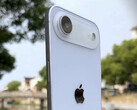Whilst the Apple iPhone 16 still features an outdated 60 Hz OLED panel, rumours have been circulating for months that the upcoming iPhone 17 will receive an upgrade to a 6.3-inch 120 Hz display, which is slightly larger than its predecessor’s 6.1-inch screen. According to leaker Fixed Focus Digital, the iPhone 17 and 17 Air will indeed sport a 120 Hz display, but they will use LTPS rather than LTPO technology, potentially omitting ProMotion support.
This could result in three key downsides. First, the two lower-priced iPhone 17 models may lack always-on displays, as Apple would need to minimise power consumption by reducing the refresh rate to 1 Hz – something LTPS panels can't achieve. Second, power usage may also increase because LTPS panels can’t dynamically lower their refresh rate based on screen contents, such as when displaying a static photo or a 30 fps video. Third, LTPS screens can’t adjust their refresh rate to a game’s actual frame rate, leading to less fluid visuals, especially when the game struggles to maintain its target frame rate – similar to monitors without VRR support.
Nonetheless, if the iPhone 17 and 17 Air do feature a 120 Hz refresh rate, games and animations will appear significantly smoother than on the iPhone 16. App interactions (such as navigating, scrolling and zooming) should also feel noticeably smoother thanks to the faster response time. Removing features like an always-on display might be Apple's way of further differentiating the lower-tier models from the pricier Pro versions. However, the higher power consumption from LTPS displays could pose a challenge, particularly for the iPhone 17 Air, which reportedly has a modest 3,000 mAh battery. As always, such early rumours should be taken with a grain of salt.


































